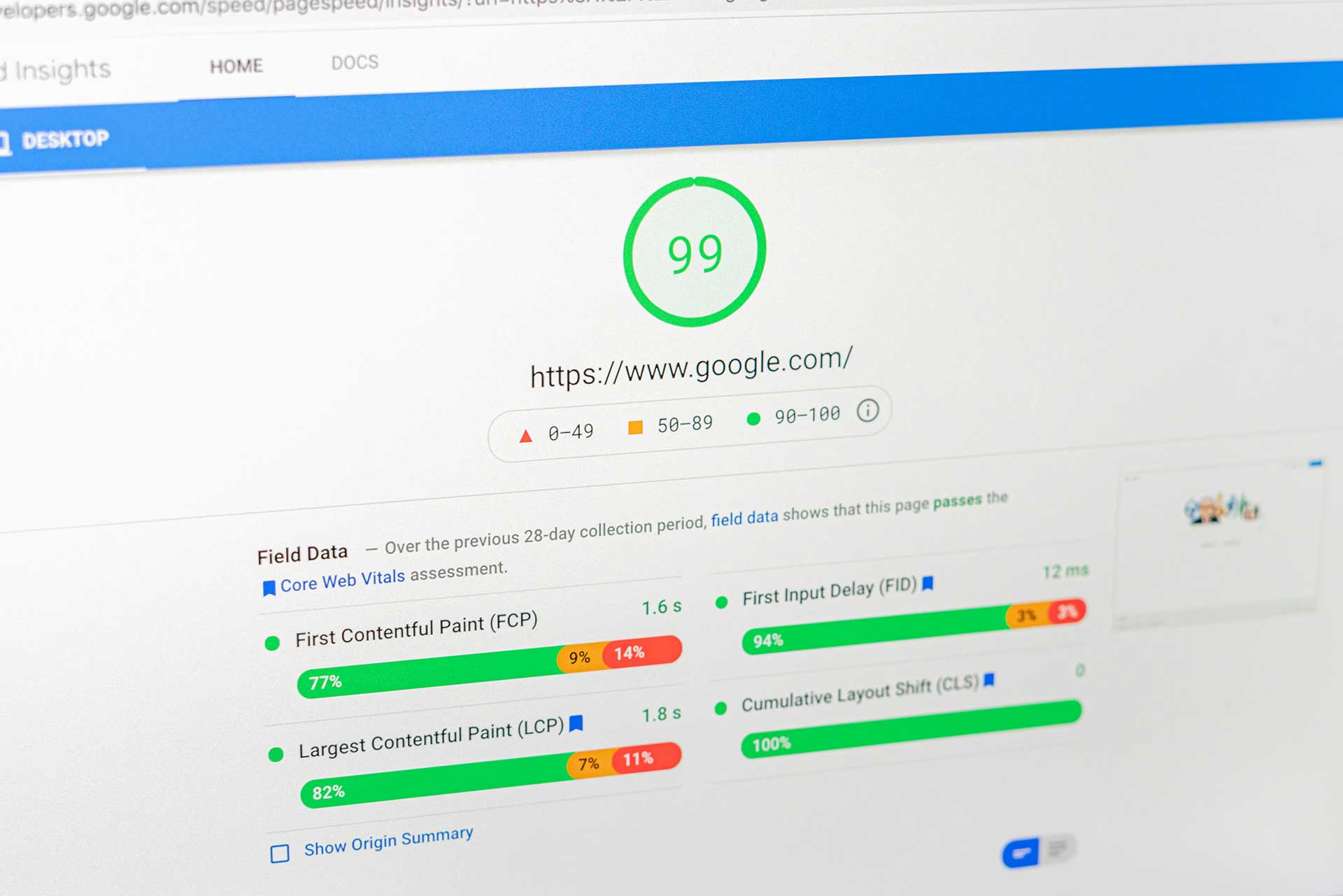Imagine clicking on a website that takes more than five seconds to load. Chances are, you’ll hit the back button and move on to another site. In today’s fast-paced digital world, website speed is one of the most important factors for success.
In 2025, users expect websites to load in under 3 seconds. Google also considers website speed as a ranking factor, meaning a slow site can hurt both your visibility and your revenue.
In this post, we’ll explore why website speed is critical for SEO and conversions, how it affects user experience, and the best practices to make your WordPress website faster than ever.
1. What Is Website Speed?
Website speed refers to how quickly a web page loads and displays content for users. Key metrics include:
- First Contentful Paint (FCP): When the first text/image is visible.
- Largest Contentful Paint (LCP): Time until the main content is fully loaded.
- Time to Interactive (TTI): When the page becomes usable.
A fast website provides a smooth, seamless browsing experience, while a slow one frustrates visitors and drives them away.
2. Why Website Speed Matters for SEO
Google has confirmed that site speed is a ranking factor. Here’s why:
- Crawl Efficiency: Faster sites allow search engines to crawl more pages.
- Core Web Vitals: Metrics like LCP, FID, and CLS directly influence rankings.
- Bounce Rates: Slow sites lead to higher bounce rates, which negatively impacts SEO.
- Mobile Optimization: With mobile-first indexing, speed is even more crucial.
If your site is slow, you risk losing both search engine rankings and organic traffic.
3. How Speed Impacts Conversions
Website speed isn’t just about rankings—it directly impacts your bottom line:
- 1-second delay = 7% loss in conversions
- 53% of users abandon sites that take more than 3 seconds to load
- 79% of customers won’t return to a slow website
For e-commerce websites, slow speed can mean thousands of dollars lost every day. For service businesses, it means fewer leads and missed opportunities.
4. User Experience and Retention
User experience (UX) is at the heart of conversions. A fast-loading site keeps users engaged, while a slow one creates frustration.
When visitors find your site easy to navigate and responsive, they are more likely to trust your brand, stay longer, and take action—whether it’s making a purchase, filling out a form, or signing up for a newsletter.
5. Common Causes of Slow Websites
- Large Images: Non-optimized images increase load times.
- Too Many Plugins: Excess plugins can bloat your site.
- Poor Hosting: Low-quality servers slow performance.
- Unoptimized Code: Excessive CSS/JS files cause delays.
- No Caching System: Without caching, every visit reloads resources.
- Unnecessary Redirects: Too many redirects add extra loading steps.
6. How to Test Website Speed
You can use free tools to test speed and identify issues:
- Google PageSpeed Insights
- GTmetrix
- Pingdom Tools
- WebPageTest
These tools analyze your site and provide suggestions for improvement.
7. Best Practices to Improve Website Speed
✅ Optimize Images
Compress images with tools like Smush or TinyPNG without losing quality.
✅ Enable Caching
Use plugins like WP Rocket or W3 Total Cache to store static versions of pages.
✅ Use a Content Delivery Network (CDN)
CDNs like Cloudflare or StackPath deliver content faster by using servers worldwide.
✅ Minify CSS & JavaScript
Plugins like Autoptimize reduce file size and speed up rendering.
✅ Choose Fast Hosting
Managed WordPress hosting providers like SiteGround, WP Engine, or Kinsta specialize in speed.
✅ Use Lazy Loading
Load images/videos only when users scroll to them.
✅ Reduce Plugins
Only install necessary plugins and delete unused ones.
8. Website Speed and Mobile Users
Mobile users make up the majority of internet traffic in 2025. A site that isn’t optimized for speed on mobile risks losing massive amounts of traffic and sales.
Responsive, mobile-first designs paired with fast loading are essential for retaining users.
9. Website Speed and WordPress
WordPress websites, while powerful, can become bloated if not optimized. To keep your WordPress site fast:
- Use lightweight themes like GeneratePress or Astra
- Limit plugin usage
- Regularly update WordPress, themes, and plugins
- Clean your database with tools like WP-Optimize
At DevsBloom, we specialize in creating WordPress websites that are fast, optimized, and designed for performance.
10. The Financial Impact of Speed
Let’s put speed into numbers:
- Amazon found that a 1-second delay costs $1.6 billion annually.
- Google discovered that reducing load time by half increased engagement by 50%.
- A case study by Walmart revealed that faster sites led to 2% higher conversions for every 1-second improvement.
For small and medium businesses, the impact might not be billions, but even a slight increase in conversions can mean thousands of extra revenue each year.
11. Future Trends in Website Speed Optimization
- AI-Driven Optimization: Automated tools adjusting performance in real-time.
- 5G-Optimized Websites: Leveraging ultra-fast internet for richer experiences.
- Green Hosting: Eco-friendly servers designed for faster delivery.
- Edge Computing: Bringing content closer to users for instant load times.
Staying ahead of these trends will ensure your business remains competitive.
Website speed is no longer optional, it’s a requirement for online success. A slow site damages your SEO, frustrates users, and kills conversions. A fast site, on the other hand, boosts visibility, improves user experience, and drives growth.
At DevsBloom, we design and develop lightning-fast WordPress websites that perform seamlessly on all devices. With optimized speed, responsive design, and user-friendly interfaces, we help businesses maximize traffic, conversions, and revenue.
In the digital world, speed equals success—make sure your website keeps up. 🌸






